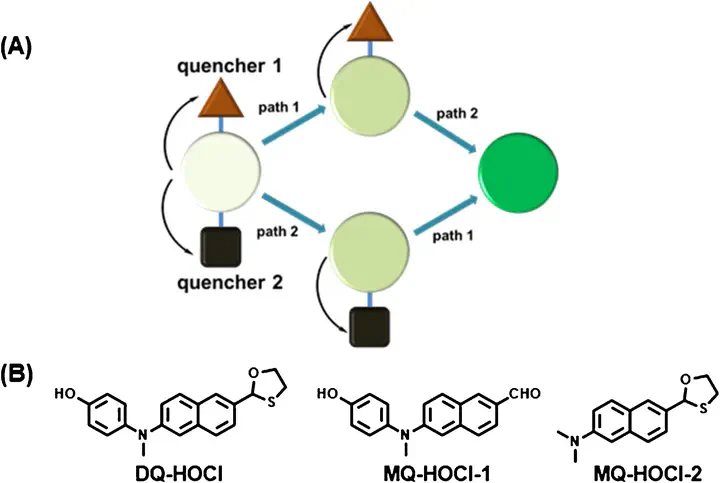Two quenching groups are better than one: A robust strategy for constructing HOCl fluorescent probe with minimized background fluorescence and ultra-high sensitivity and its application of HOCl imaging in living cells and tissues
 © 2020 Elsevier Ltd. All rights reserved.
© 2020 Elsevier Ltd. All rights reserved.Abstract
We report herein fluorescent probes equipped with dual-quenching groups exhibiting superior sensitivity than probes with mono-quenching groups. Importantly, with this strategy, the probe with dual-quenching groups react with HOCl through two distinct reaction mechanisms, which reduce the plausible side reactions with other competing analytes and enhance the probe’s selectivity. As a proof-of-concept study, we designed and synthesized a probe with dual-quenching groups DQ-HOCl to detect HOCl, which is one of the most important ROS and linked with a number of diseases. In addition, two control probes with mono-quenching groups, MQ-HOCl-1 and MQ-HOCl-2, were also synthesized for comparison purpose. Fluorescent assays demonstrated that DQ-HOCl indeed shows ultra-high sensitivity and selectivity compared with probes with mono-quenching groups. Furthermore, the probe has been successfully utilized to imaging exogenous/endogenous HOCl in living cells. Moreover, DQ-HOCl was applied to visualize HOCl in kidney tissues from rat due to the increased penetration depth and lower tissue autofluorescence from the nature of two-photon probes.